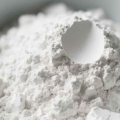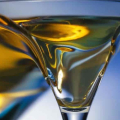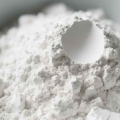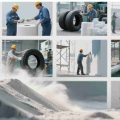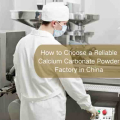- Welcome to China Calcium Carbonate Manufacturer
- WeChat:15078781000
Calcium carbonate is a vital mineral used as a filler and pigment in the paper industry. It improves the brightness, opacity, and smoothness of paper while reducing production costs. This article explains how calcium carbonate is used in different types of paper and why it’s becoming more popular in modern papermaking.
Why Calcium Carbonate is Used in Paper Production
Calcium carbonate is widely used because of its:
High whiteness
Excellent opacity (covering power)
Low oil absorption
Low cost
These properties make it ideal for paper manufacturers looking to enhance quality while keeping costs down.
Types of Calcium Carbonate Used in Papermaking
There are two main forms used:
Ground Calcium Carbonate (GCC): Also known as heavy calcium carbonate.
Precipitated Calcium Carbonate (PCC): Also known as light calcium carbonate, it has finer particle size and higher brightness.
Heavy vs. Light Calcium Carbonate
| Type | Particle Size | Brightness | Cost | Application |
|---|---|---|---|---|
| Heavy (GCC) | Larger | Good | Lower | Low/mid-grade paper |
| Light (PCC) | Finer | Excellent | Higher | High-end paper, coatings |
Applications of Calcium Carbonate in the Paper Industry
1. Filler for General Paper Production
Adding calcium carbonate to paper pulp helps improve:
Brightness
Opacity
Paper strength
Cost-efficiency
For example, toilet paper uses a moderate amount of calcium carbonate to maintain softness and lower cost.
2. Coating Pigment for Coated Paper (e.g., Art Paper)
Coated paper is made by applying a coating layer to base paper, often called “coated printing paper.”
Calcium carbonate in coatings:
Ranks second only to kaolin (china clay)
Improves ink absorption
Enhances brightness and coverage
However, calcium carbonate absorbs more binder (glue), may reduce gloss, and has higher ink demand—these limit its use in some cases.
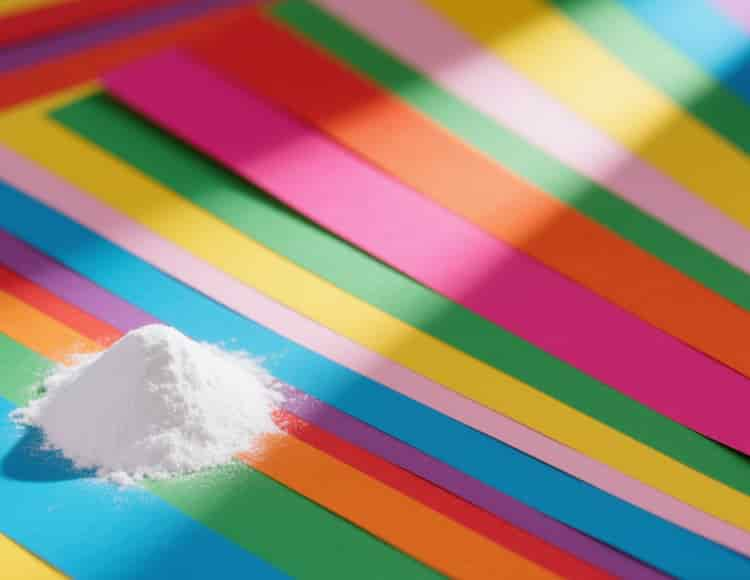
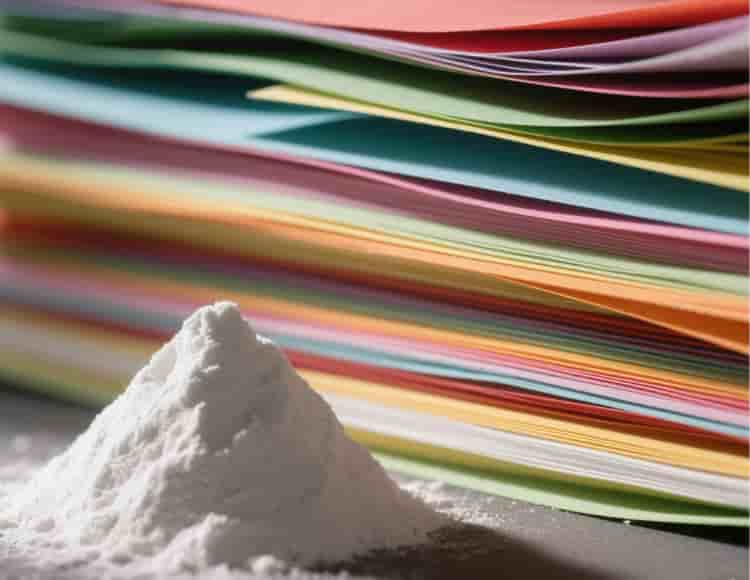
3. Special Uses (e.g., Stamp Paper)
In stamp production, paper must be soft enough for perforation. Special forms of calcium carbonate, with high softness and uniformity, are used.
For stamp paper, calcium carbonate content can reach 40% of the total fiber weight.
4. Requirements for Paper Filler
When used as a filler, light calcium carbonate should meet specific conditions:
Neutral or alkaline pH – Alkaline fillers maintain paper strength and brightness better than acidic ones.
Uniform particle size – Ensures even distribution in pulp.
Simple shape – Lower oil absorption helps reduce glue usage.
Historically, many paper mills used acidic sizing, which limited calcium carbonate use (it reacts with acid to release CO₂). With the rise of neutral sizing techniques, calcium carbonate is becoming more mainstream.
5. Use in Cigarette Paper
Cigarette paper needs:
No glue
Low ash content
Controlled pore size and burn rate
For this, calcium carbonate must:
Have particle sizes in a specific range
Be low in sulfur
Have high brightness
Calcium carbonate content in cigarette paper: 40–50% of the fiber weight.
6. High-End Coated Papers (e.g., Premium Art Paper, Stamp Paper)
These require ultrafine calcium carbonate, typically:
Cubic, spherical, or flake-like crystals
Particle size < 0.5μm
Brightness > 95%
Viscosity < 0.2 Pa.s (at 50% content)
Binder demand < 15%
For mid-range paper, slightly larger particles (under 5μm) are acceptable. Low-cost coated paper often uses GCC due to cost efficiency.
About Jintai Calcium Carbonate
Jintai is a professional manufacturer of high-quality calcium carbonate, serving global clients across industries, including paper, plastics, paints, rubber, and more. With advanced production technology and strict quality control, Jintai delivers both Ground Calcium Carbonate (GCC) and Precipitated Calcium Carbonate (PCC) tailored to customer needs.
Jintai Calcium Carbonate for the Paper Industry
Jintai’s calcium carbonate products are specially engineered to meet the physical requirements of modern papermaking:
✅ High Whiteness: Products consistently achieve whiteness above 95%, ensuring bright and clean paper appearance.
✅ Controlled Particle Size: Jintai offers customizable particle sizes:
<0.5μm for high-end coated papers (e.g., art paper, stamp paper)
3–5μm for mid-range and cigarette papers
✅ Uniform Particle Distribution: Narrow particle size distribution improves dispersion in pulp and coating layers, enhancing paper uniformity.
✅ Low Oil Absorption: Simple, cubic crystal structures reduce binder usage, saving on coating materials.
✅ pH Stability: Neutral to slightly alkaline pH levels, making them suitable for neutral sizing processes, improving paper durability and brightness retention.
✅ Low Impurities: Jintai products are low in sulfur and heavy metals, ensuring compatibility with hygiene-sensitive paper products like toilet paper and cigarette paper.
🌍 Serving Global Paper Mills
Jintai Calcium Carbonate has been widely adopted by international paper manufacturers for:
Toilet Paper. Coated Paper. Cigarette Paper. Stamp Paper. Packaging Paper
Looking for a reliable partner for consistent calcium carbonate supply?
Contact Jintai today for product samples, technical specs, and consultation. Need customized filler solutions? Contact us for paper-grade calcium carbonate specifications.
